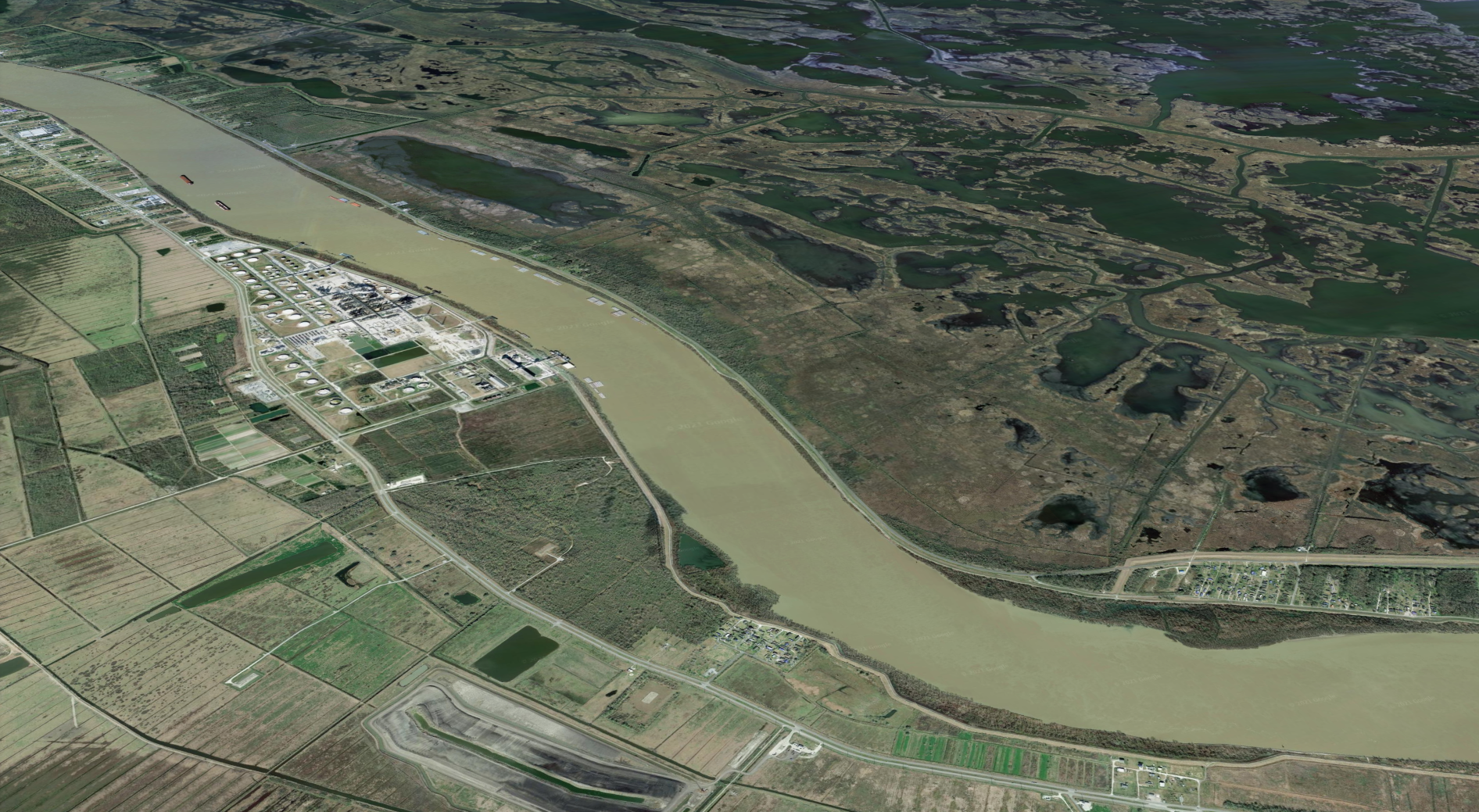The energy infrastructure company Tallgrass Energy Partners announced Friday it is canceling a $2.5 billion oil export terminal and pipeline project in Plaquemines Parish, Louisiana, citing climate, economic, and cultural concerns. The proposal had faced years of fierce opposition from residents and environmental groups, who argued the facility would be built atop a historic burial site of enslaved people, further exacerbate climate change, and impact nearby ecological restoration efforts, partially blocking the flow of important sediments in theMississippi River Delta.
The Kansas-based company said in a press release that it is “withdrawing the current air permit application” for the site, and is considering alternative commercial development options.
The proposed export terminal would have sat on the west bank of the Mississippi River near the town of Ironton, with the capacity to hold up to 20 million barrels of oil. But the 200-acre site encompassed part of the former St. Rosalie Plantation, which used slave labor to grow sugarcane from 1828 to 1859, according to news site Bayou Brief. Most of Ironton’s residents are descendants of the enslaved Black people forced to work on the plantation. Over the last two years, archaeologists hired by the company have found 13,000 artifacts from the plantation, including pieces of human bones and fragments of inscribed tombstones, according to NOLA.com.
“My ancestors are buried at St. Rosalie,” Reverend Haywood Johnson, Jr, pastor at Ironton’s Saint Paul Missionary Baptist church. said in a press release earlier this year.
In response to the concerns, Tallgrass Energy decided to shrink the footprint of the facility, known as Plaquemines Liquids Terminal. This led to a reappraisal of the project, which ultimately led to the company’s decision to cancel it entirely.
Plaquemines Port executive director Sandy Sanders told NOLA.com that market changes likely helped to finalize Tallgrass Energy’s announcement. Just two weeks ago, Phillips 66 decided to shut its 2,400-acre oil refinery in the parish and convert it to a fuel terminal. The company said that the damages from Hurricane Ida in August — which submerged the facility under 5 feet of water — would be too expensive to repair in the current energy market, according to the Associated Press.
The project also would have sat next to the Mid Barataria Sediment Diversion project, an essential area where the state is working to restore and save Louisiana’s remaining southeastern wetlands, part of the state’s ambitious $1.4 billion coastal restoration plan. The diversion would re-route freshwater, sediment, and nutrients into the Barataria Basin to help restore its ecosystems. The oil terminal could have reduced the amount of sediments entering the channel, slowing down the ecological recovery, activists warned.
Additionally, Tallgrass Energy estimated in its air permit application that the oil terminal would release 500,000 tons of greenhouse gases every year, as well as emit other harmful gases like benzene. If the project had been approved, the Louisiana Department of Environmental Quality, or LDEQ, would have ignored “the harm from air pollution to the nearby communities of Ironton, Phoenix, Myrtle Grove, and Wood Park,” Mike Brown, an attorney with the environmental group Earthjustice, said in a press release earlier this year.
“As we strive to find a balance between the need to decarbonize and the need for safe, reliable, and affordable energy, nearly every infrastructure decision we make is guided by our decarbonization objectives,” Tallgrass spokesperson Phyllis Hammond told NOLA.com.



